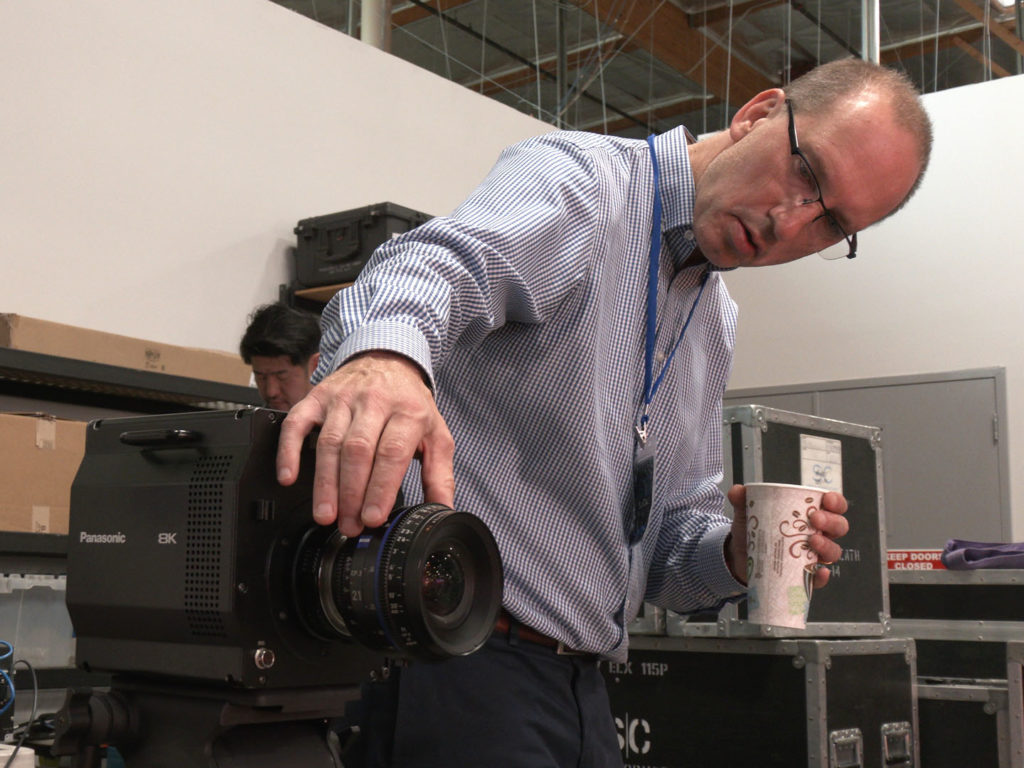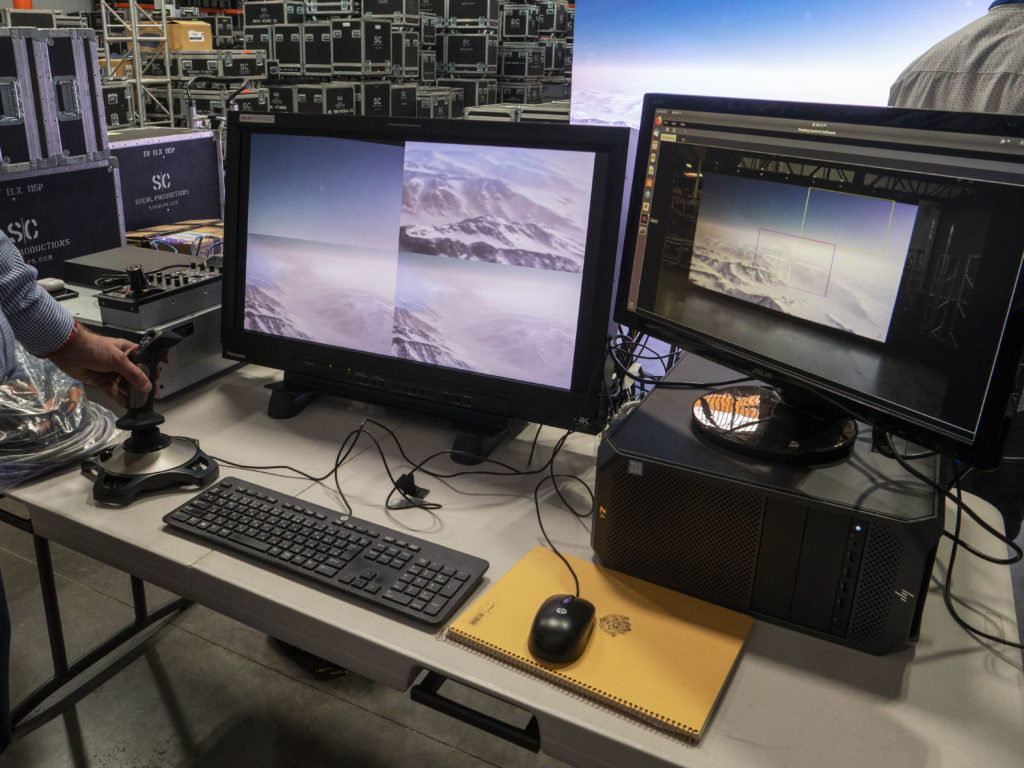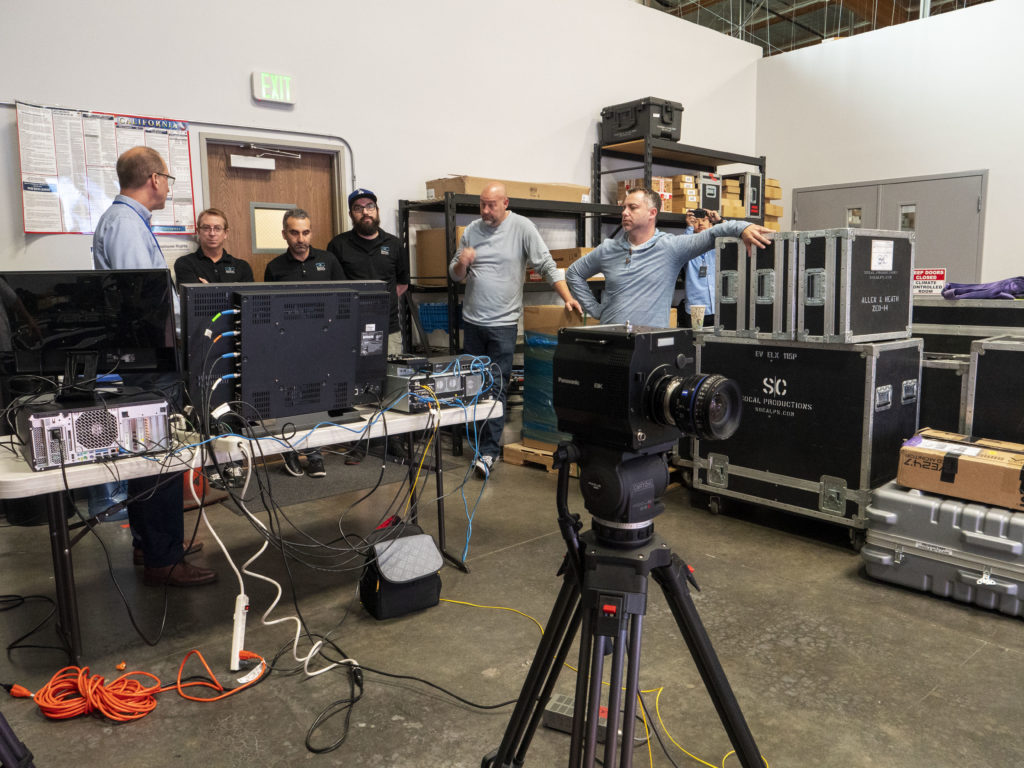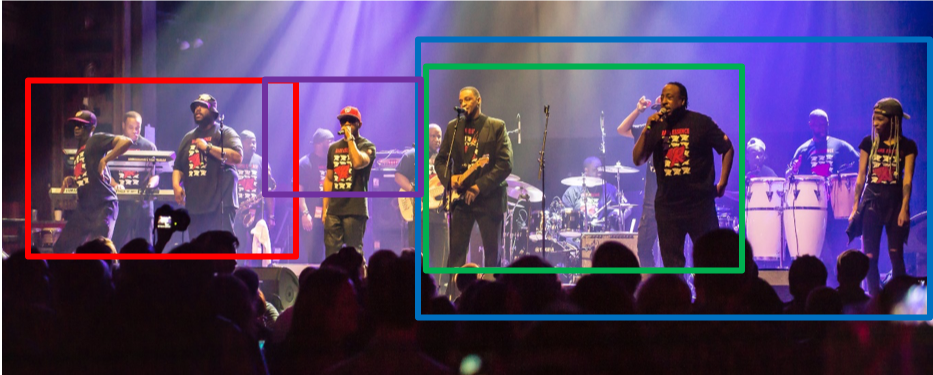November 15, 2019
7 min read
Although 8K is now available in cinema cameras, 8K broadcast for the masses is still a long way off. Panasonic announced a new 8K ROI (Region of Interest) system, altering traditional broadcast production by enabling up to four different FHD (1920 x 1080) images to be captured from a single 8K camera with a single operator. For today's broadcast world, 8K ROI can function as a multi-cam system in a single camera body. The camera views can be controlled directly or be driven in response to moves made by a master camera view. This allows an operator to keep focused on the action by reducing the need for re-framing each individual region during live production.
The 8K ROI camera system, which was launched this year, brings an automated workflow to your live production. It also features automated picture correction technology so even distorted images at the frame edges will be corrected and cropped with a natural-looking FHD image from the main 8K picture. The single camera system also can use less expensive wide angle prime still lenses since the lens position can be locked off.
8K ROI example from Panasonic on Vimeo.
Senior Product Manager Michael Bergeron discusses the history of robocams, 8K ROI technology and its benefits, Panasonic’s two 8K sensors, and more.
QUESTION: For live event capture, what is the history of robocams and how have they evolved? Most people think of security-type cameras, right?
MICHAEL BERGERON: For a long time, there were robocams and they were based on the same image block as broadcast box cameras, which were three chip and contained a B4-mount. It took a while to get them in HD, and even longer for 4K. The security camera business used C-mount cameras on a small pan/tilt, and there were broadcast versions. The difference was the broadcast robocams had better image quality, more accurate servos, and they could have repeatable moves. Since requirements of security cameras were minimal, to get the cost down, the industry went to a one-piece design. By combining a box camera, lens, and pan/tilt, you can get the same kind of advantage you would have with a handheld camcorder with a fixed lens. You also don’t have to build power to rebalance it with different size lenses, which reduces the cost and weight of the system. This takes us back ten to years ago when Panasonic made the first all-in-one broadcast PTZ HD camera, which was the HE100.
QUESTION: What was the genesis of the 8K ROI system?
BERGERON: We showed a window-controlled pan and scan system using four stitched HD cameras with side-to-side images. It was really complicated because you had to stitch the four cameras together. It was also was very bulky, because you had four cameras - all in a rack - with an automated system for lining them up. You also had to re-line them up every time you changed the camera location. Our idea was to have a single camera with one big canvas that you could pull a cutout frame, but the original system was just too expensive and unwieldy; so, when our 8K sensor became available, we were like, “let's try that again.” Instead of just having a single 8K picture, we tried the region of interest and it worked much better than the stitched four camera lineup. It went from a setup that was extremely difficult, to a one that was easier than a regular broadcast camera.

With coffee in hand, Senior Product Manager Michael Bergeron demonstrates the 8K ROI system.
QUESTION: Can you talk a little bit about the sensor of the camera?
BERGERON: We need to keep things straight because we [Panasonic] have two 8K sensors right now. The 8K sensor in our ROI system is a CMOS sensor. It's not unlike some of the other CMOS sensors we have like the EVA1 or the VariCam, it’s just higher resolution. It still has great dynamic range and lots of pixels. It even has great sensitivity with the added resolution since it’s a full frame sensor.
The 8K ROI sensor should not be confused with our 8K Organic sensor. The 8K Organic sensor is currently in development and has not been designated to specific camera designs yet. The 8K Organic sensor is a Super 35 sensor but its new technology should achieve even better sensitivity and dynamic range than the CMOS 8K ROI sensor. Panasonic felt a Super 35 sensor will make a camera employing it eligible for a wider variety of lenses - especially if you want a zoom lens - for an 8K production.
QUESTION: What does the 8K ROI system consist of?
MIKE BERGERON: To start with, it’s a camera head and a CCU (Camera Control Unit). The camera head doesn’t really do any processing. The video processing happens in the CCU. It’s a 100-Gb fiber connection from the camera to the CCU and it passes the raw data from the 8K sensor. The CCU can either process it all as one image and output 8K video, or alternately process four ROI cutouts. The system also employs distortion correction, so the edges of the frame don’t look warped. The calculation of the distortion correction depends on the focal length of the lens. There’s also a paint box [The AK-HRP1000], which is the same panel that our studio camera uses.
One can use the 8K ROI camera as an 8K system camera, but never without the CCU. There’s also no integrated viewfinder, or internal recording. When you’re in the 8K ROI mode, you no longer have the 8K output because the output becomes the four HD outputs.

Controlling four FHD cutouts within the 8K ROI canvas
QUESTION: What are the big advantages in using the 8K ROI system over a typical broadcast setup?
BERGERON: First, you save space compared with multiple fully manned cameras, as well as more simplicity with setup. Compared with PTZs, the movements are more accurate and repeatable. You also don’t need to use expensive lenses because using a still photography prime lens - the optical quality is superb and there’s no focus breathing. You’re also not going to adjust focus when in use, the focus lock-off is done during the set up.
Moreover, if I correct the focus and iris settings so the LED scoreboards aren’t causing moiré then they won’t moiré in the cutout when I zoom because there’s no optical zoom. That’s a big issue with LED walls when you’re zooming the lens – the wall exhibits artifacting. You’ll see that in soccer matches with LED advertising ribbons.
But the main thing is production cost because the cost of staff per camera view is reduced. Setup time is much faster, which also saves money. With a typical broadcast, you can get way more camera views with the same amount of crew, which increases the overall production value and keeps the costs lower with less setup time and inexpensive lenses.

A typical 8K ROI setup
QUESTION: What are the main applications for the system? Would it be mainly used for sports like basketball or hockey?
BERGERON: Concerts are ideal because you get four camera views without taking up additional space. You can work in spaces where ten PTZs wouldn’t work – all the physical limitations of PTZs are suspended when you use the ROI system. The other big thing with 8K ROI is the follow function where I can manually control one window and the others will follow it. Not only for the other three cutouts on that single camera system, but also for any other camera that is attached to the same controller. This is linked operation for controlling multiple camera views from multiple angles. I control a cutout in one camera, which can drive the cutouts for many other linked cameras. This is huge.
We have tested extensively with basketball. To be fair, it’s not going to give you near the same viewing experience that a full outside broadcast crew for a typical NBA game would provide. It might be used in a high-end production but not a replacement for broadcast cameras but more of an enhancement. We’ve also gotten even more interest from several sports broadcast organizations to utilize the 8K ROI camera as a lower cost package to cover lower tier games where limited viewership base doesn’t justify an outside broadcast truck.
For a particularly active area like the red zone in a football game, the 8K ROI system is great for playback. For last year’s Super Bowl, CBS used our 8K camera system but instead of managing the ROI cutouts in the CCU, they put it in 8K mode and ran the full 8K picture into a Dreamcatcher with an Evertz playback server, which can also provide the HD cutouts from the 8K picture. Unfortunately, due to nature of last year’s game, we didn't make it to air because the ball barely made it into the red zone.

HD cutouts from 8K ROI for a concert
QUESTION: What is Panasonic’s overall roadmap with 8K ROI?
BERGERON: We want to do a lot more. We’re working a lot on AI for auto tracking and if you have an automated system (e.g., people and ball tracking), it will become a platform for everything. Any kind of auto tracking system depends on the ability of the camera to be able to move quickly and keep up with what’s going on and the 8K ROI system excels at that. If you have the auto tracking data and you can get it to the 8K ROI camera, it’s going to follow it exactly right. We’re doing a lot of research into advanced auto tracking and this is the ideal system to deliver it.
Eventually, we hope it’s going to enable the industry to cover more events with a higher production value without having to transport so many people and equipment around.
If you would like more information on the 8K ROI system, visit https://na.panasonic.com/us/8KROI.
If you would like a demo, email videoproductionsolutions@us.panasonic.com.
![]()
